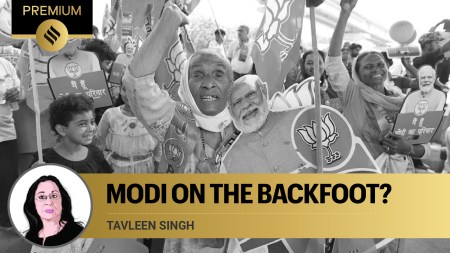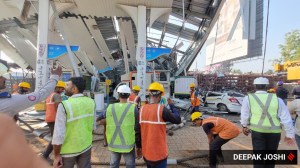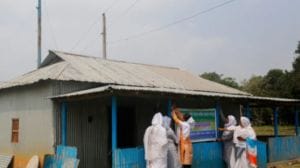- India
- International
Explained: The Sri Lankan Refugee Question
Most of the refugees crossed the 29 km of sea from Talaimannar on Mannar Island to Rameshwaram on Pamban Island.
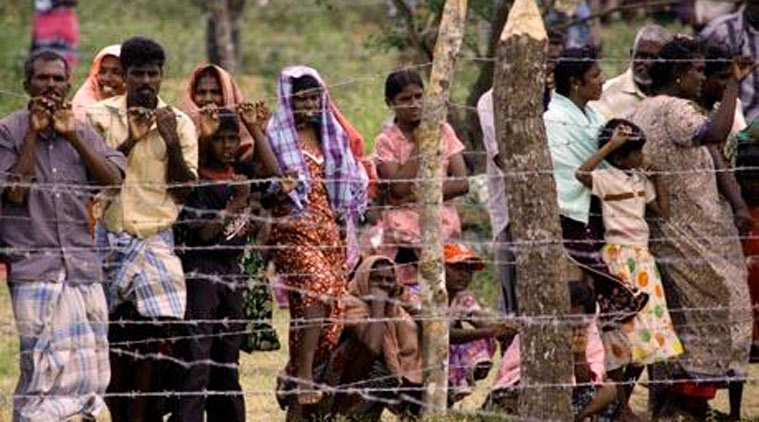 Most of the refugees crossed the 29 km of sea from Talaimannar on Mannar Island to Rameshwaram on Pamban Island.
Most of the refugees crossed the 29 km of sea from Talaimannar on Mannar Island to Rameshwaram on Pamban Island.
Tamil Nadu stayed away from a meeting convened by the Centre on Friday to discuss the repatriation of Sri Lankan Tamil refugees, saying it was ‘premature’. ARUN JANARDHANAN explains the key issues concerning the over 1 lakh Tamils who fled the war in Sri Lanka and are now refugees in India
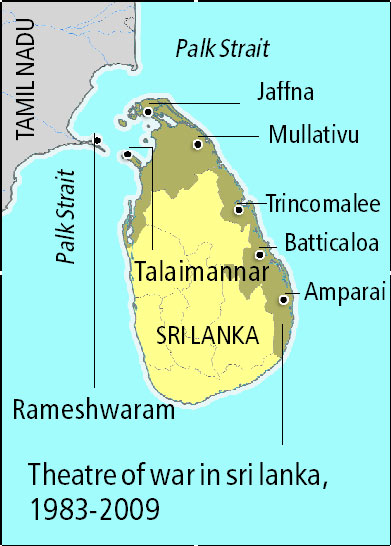 Most of the refugees crossed the 29 km of sea from Talaimannar on Mannar Island to Rameshwaram on Pamban Island.
Most of the refugees crossed the 29 km of sea from Talaimannar on Mannar Island to Rameshwaram on Pamban Island.
Who qualifies as a Sri Lankan refugee?
There are five categories. First, and primarily, people who live in government-run camps across Tamil Nadu. Second, those who do not live in the camps, but have a refugee certificate from the district Collectorate, and are registered with the nearest police station. There are about 30,000 people in this category. Third, Sri Lankan nationals with valid travel documents, some of whom stayed on after their visas expired, and some who use India as a transit point on their way to Europe. Fourth, former Tamil militants sheltered in special camps. The fifth category includes the refugees who have arrived in Tamil Nadu recently with the help of the Sri Lankan armed forces, mostly looking for livelihood, or to take a boat from Kerala to another country, which is often Australia.
What is the number of such refugees?
In a letter written to the PMO on Wednesday, Chief Minister O Panneerselvam said there were a total of 1,02,055 refugees belonging to 34,524 families in Tamil Nadu. 64,924 of them, belonging to 19,625 families, were living in 107 refugee camps.
When did the refugees come to Tamil Nadu?
In four waves beginning July 1983. The first followed Black July, the anti-Tamil pogrom that began after the July 23, 1983 LTTE ambush in which 13 Sri Lankan soldiers were killed. Sinhala mobs killed hundreds of Tamils in retaliation, and the exodus it triggered continued till 1987, when the India-Sri Lanka Accord was signed. Between 1983 and 1987, at least 1.34 lakh Sri Lankan Tamils are officially estimated to have arrived in India, mostly in Tamil Nadu. After the accord, chartered ships ran between India and Sri Lanka for those who chose to return. Between 1987 and 1989, some 25,600 refugees went back to Sri Lanka, according to official records.
The war flared up again in June 1990, triggering the next rounds of exodus, during which around 1,22,000 Tamils arrived in India. This was the time when Sri Lankan Tamils also started to migrate to European countries and Canada. Rajiv Gandhi was assassinated by the LTTE in 1991, and between 1992 and 1995, an estimated 54,000 refugees were repatriated to Sri Lanka.

A third wave started arriving in 1995, when the war intensified. 23,000 arrived in Tamil Nadu between 1995 and 2002.
The final phase of arrivals continued until 2013, four years after the final defeat of the LTTE and death of Prabhakaran.
What route did the refugees take to India?
Most crossed the 29 km of sea from Talaimannar on Mannar Island to Rameshwaram on Pamban Island. Illegal boat operators charged hefty fees to clandestinely transport Tamil refugees desperate to flee the fighting in Sri Lanka. Most returning refugees sailed from Dhanushkodi or Kodiakkarai near Nagapattinam.
What social benefits are offered to the refugees?
The Tamil Nadu government gives Rs 1,000 every month to the head of the refugee family, Rs 750 to each adult, and Rs 400 to every child. Each refugee family gets 20 kg of rice every month, and has ration cards to buy from the PDS. Refugee children are eligible to study up to Class 12 for free, and receive the benefits due to Indian students, including free textbooks, uniforms, bicycles, noon meals, bus passes and laptops.
How is life in the refugee camps?
Despite the benefits, 20 refugees at a camp near Trichy tried to kill themselves in November 2014 to protest slow progress of their bid to get repatriated. They complained life at the camp was worse than the one that they had fled. The National Human Rights Commission has stepped in on occasion to ensure basic rights for refugees. Refugees complain that if not citizenship of India, they should at least have the right of free movement in the country.
What does the government say?
Both the DMK and AIADMK governments have periodically demanded citizenship or permanent resident status for them, and keep repeating that they may live in India for as long as the northern Tamil provinces are in the grip of the Sri Lankan army.
Buzzing Now
May 14: Latest News
- 01
- 02
- 03
- 04
- 05





